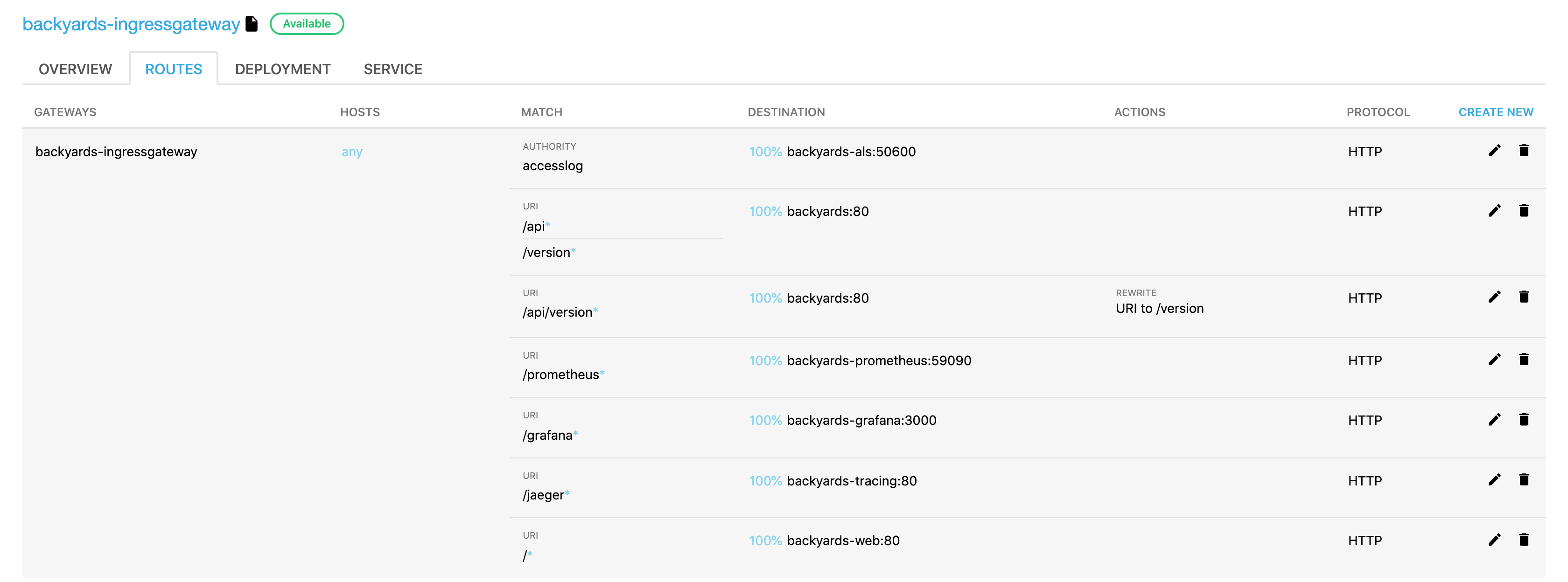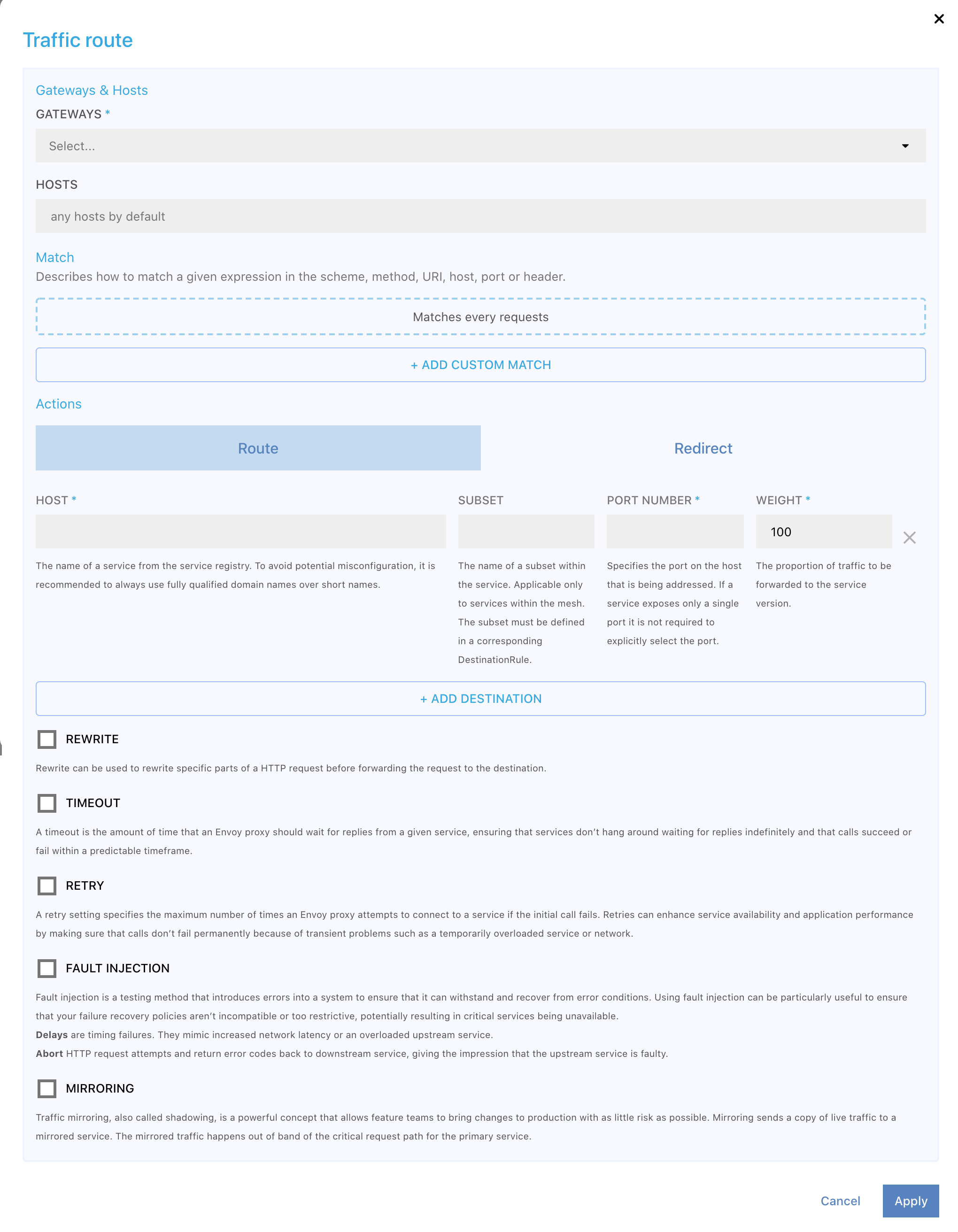One of the main reasons to use Istio gateways instead of native Kubernetes ingress is that you can configure the routing of incoming traffic just like in-mesh routes, using VirtualServices. You can apply Istio concepts to incoming requests, like redirects, rewrites, timeouts, retries, or fault injection.
Backyards displays routes and their related configuration on the Gateways page, and gives you the ability to configure routing. Backyards translates the inputs to Istio CRs (mainly VirtualServices), then validates and applies them to the cluster.
The MENU > GATEWAYS > <Gateway-to-inspect> > ROUTES page displays the following information about the routes of the gateway.
- HOSTS: The host selector that determines which hosts are accessible using the route.
- MATCH: The route applies only to requests matching this expression.
- DESTINATION: The destinations of the routing rule.
- ACTIONS: Any special action related to the route (for example, rewrite).
- PROTOCOL: The protocol permitted in the route.

- To modify an existing route, click
.
- To delete a route, click
 .
. - To create a new route, click CREATE NEW.
Create a new route 🔗︎
To create a new route on the gateway, or to apply redirects, rewrites, or other changes to the incoming requests, complete the following steps.
-
Navigate to MENU > GATEWAYS > <Gateway-to-modify> > ROUTES.
-
In the Ports & Hosts section click CREATE NEW.

-
Set the parameters of the new route as needed for your environment. As a minimum, you must set GATEWAY PORT NUMBER (where the gateway should receive traffic) and GATEWAY PORT PROTOCOL (the type of traffic to receive).

-
(Optional) Configure other traffic management settings (for example, rewriting requests or mirroring) as needed for your environment.
-
Click CREATE.













